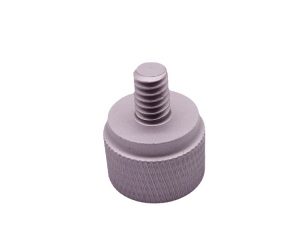Once a mold has been tested and confirmed for functionality and performance, the next crucial step is to organize and archive the data collected during the testing phase. This process is essential, as it creates a comprehensive documentation resource that can be referenced for future maintenance, modifications, and overall improvement of the production process. Here’s a detailed look at how to effectively archive mold data.
Importance of Archiving Mold Data
Ensuring Quality Control
Archiving mold testing data is fundamental for manufacturers who strive to maintain high-quality production standards. By keeping meticulous records, manufacturers can spot any potential issues with the mold’s performance. Imagine being able to trace back a production fault to a specific test run — this level of oversight ensures that any necessary adjustments can be made before issues escalate into larger problems.
Optimizing Performance
Organizing data from mold testing can illuminate performance optimization opportunities. Manufacturers can analyze parameters such as cycle times, injection pressures, and temperature settings to see where adjustments could enhance efficiency. For instance, if you find that a certain temperature consistently leads to higher defect rates, you can recalibrate for better results.
Maintaining Comprehensive Records
Data archiving provides a detailed history of the mold’s performance. This record can help identify trends or patterns, making it easier to forecast how similar molds might behave under comparable conditions in the future. It’s like having a crystal ball that gives insights into the mold’s lifecycle, which is incredibly valuable for both new and seasoned engineers.
Managing Costs Effectively
Cost management is another critical reason for data archiving. By identifying inefficiencies through the archived data, manufacturers can reduce scrap rates and minimize production downtime. For example, if your analysis reveals that certain injection pressures lead to increased waste, you can adjust your parameters accordingly to save both time and materials.
Steps for Organizing Mold Data
Now that we understand the significance of data archiving, let’s dive into the practical steps involved in organizing mold data for effective archiving.
Collect Mold Specifications
Start by compiling all relevant specifications for the mold. This includes part drawings, mold design drawings, 3D models, and notes on any modifications made during the testing process. This foundational data is crucial as it lays the groundwork for everything that follows.
Record Mold Trial Results
Keep a comprehensive record of all trial results, detailing injection parameters, temperature settings, cycle times, and any problems encountered during testing. This meticulous documentation is like a play-by-play of the mold’s performance, providing a clear picture of what worked well and what didn’t.
Store Inspection Reports
After the mold trials, it’s important to store inspection reports that include detailed measurements and quality assessments of the trial parts. These reports will help ensure that each part produced meets the required specifications and can be invaluable for troubleshooting in the future.
Document Mold Maintenance Records
Next, maintain detailed records of any maintenance or repairs performed on the mold during the testing phase. This should encompass cleaning, lubrication, and any component replacements. Keeping track of maintenance activities helps ensure that the mold remains in optimal condition and can significantly extend its lifespan.
Create a Mold History Timeline
Document a timeline that captures the mold’s history, including all modifications, repairs, and improvements made throughout its life. This historical context is useful for future reference and can assist in making informed decisions about mold upgrades or replacements.
Compile Material and Process Data
Don’t forget to track the materials used during the testing phase. This includes details like resin type, grade, and supplier information, along with the specific processing parameters employed during injection molding. Accurate records here will help guide future material selection and processing strategies.
Preserve Part Samples
It’s beneficial to keep representative samples of the molded parts for future reference. These samples serve as tangible benchmarks for quality comparison during new production runs, ensuring that you can maintain consistency across batches.
Capture Images and Videos
Visual documentation can be incredibly powerful. Capture images and videos of the mold in action during the testing process. This visual record not only serves as a performance reference but can also be a valuable training resource for new staff.
Organize CAD Data and Mold Drawings
Make sure to organize all mold drawings and CAD data systematically. This allows for easy retrieval when modifications or repairs are needed, streamlining future processes significantly.
Implement a Unique Mold Identification System
Assign a unique identification number or code to each mold. This makes it easy to locate specific data within your archive, avoiding confusion when dealing with multiple molds.
Structure Document Organization
Organize all archived data in a coherent manner, either physically in folders or electronically in a designated database. A well-structured archive system enhances data retrieval efficiency and overall usability.
Ensure Data Security
Finally, securing the archived data is crucial. Ensure that your data is stored safely, preventing unauthorized access and maintaining its integrity. Regular backups and access controls are good practices here.
Maintaining Molds Post-Testing
After the data is sorted and archived, the physical care of the mold is essential to ensure its longevity. Here’s a quick guide on post-testing maintenance:
- Clean Thoroughly: If the mold isn’t going to be used immediately, it’s crucial to clean it thoroughly. Remove all residue, dust, and oil stains using appropriate cleaning agents and tools. A clean mold surface is vital for extending its service life.
- Apply Anti-Rust Coating: Once cleaned, apply a layer of butter or a dedicated anti-rust oil to protect the mold from rust and corrosion. Make sure to cover the entire surface evenly for optimal protection.
- Secure Storage: Finally, store the mold in a designated location that is both safe and secure. Regular inspections of this storage area will help ensure that your molds remain in good condition and are easily retrievable when needed.
Conclusion
Sorting and archiving data after mold testing is not just an administrative task; it's a vital process that enhances the quality, efficiency, and longevity of the mold and its outputs. By following these steps, manufacturers can create a robust archive that will serve as a valuable resource for future projects.
Frequently Asked Questions (FAQs)
1. Why is it important to archive mold testing data?
Archiving mold testing data is crucial for maintaining quality control, optimizing performance, and managing costs. It allows manufacturers to track the mold's performance over time, identify issues early, and make informed decisions to improve production processes. A well-maintained archive can significantly enhance a company’s ability to troubleshoot and innovate.
2. What should be included in a mold data archive?
A comprehensive mold data archive should include mold specifications, trial records, inspection reports, maintenance logs, material and process data, part samples, images and videos of the mold in action, CAD drawings, and a unique identification system for each mold. This structured approach ensures that all relevant information is easily accessible for future reference and decision-making.



